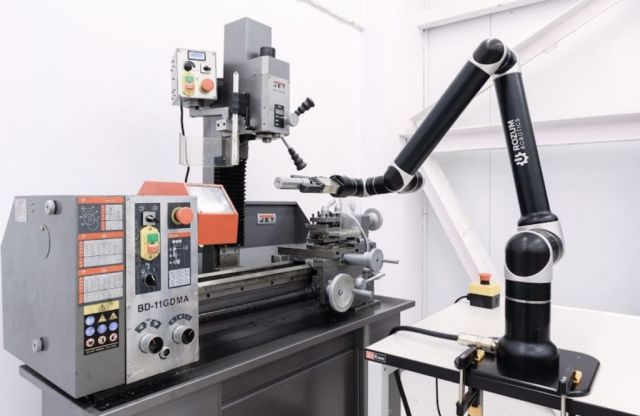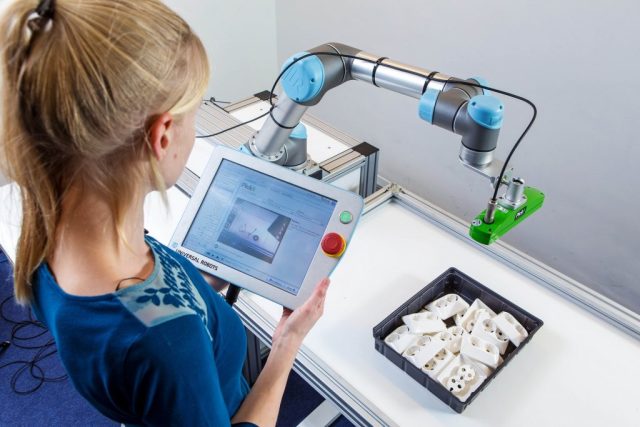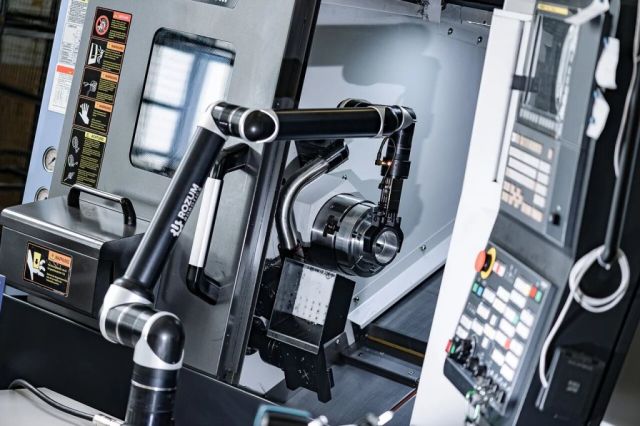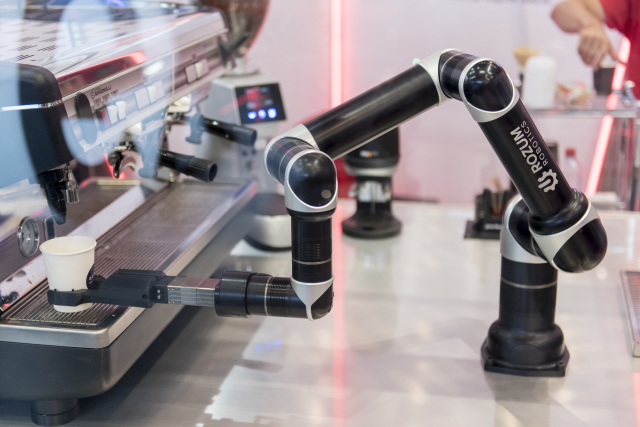The holding "Roselectronics" will be engaged in the introduction of collaborative robots at Russian industrial enterprises. The first project will be Kobot's "employment" at the All-Russian Thermal Engineering Institute, where he will apply protective coatings to turbine blades.
Today, kobots are ahead of all other types of industrial robots in popularity. First of all, for their ability to work together with people in the same space. Such an "iron colleague" can take on monotonous, but at the same time quite time-consuming operations. We tell you where collaborative robots can be used, and debunk the most common myths associated with them.
Robots and industrial collaboration
Robots are becoming more and more commonplace, and, fortunately, reality does not repeat the scenarios of Hollywood films. In most cases, "iron workers" work quite calmly at enterprises, freeing people from dangerous, routine, physically unaffordable work, thereby leaving a person more time for creativity – experimenting, learning new things, solving mostly managerial tasks.
There have been a lot of industrial robots in recent years, six-axis, delta robots, palletizer robots, SCARA robots, collaborative robots stand out among all the diversity. Each of them perfectly copes with their tasks in a certain area. For example, delta robots that look like a spider are especially popular in light industry. Palletizer robots that work on conveyors help with the packaging of products, with its loading and unloading. SCARA robots are valued for their speed and attention to detail – they can be found in enterprises where small products need to be assembled. Of all industrial robots, the fastest growing segment is collaborative robots. Kobots owe their popularity to the ability to work side by side with a person.

The very first kobot was "born" in 1996 – by that time, ordinary industrial robots had been working at enterprises for several decades. The Kobots were not immediately appreciated – it took more than ten years until they were used in various industries. The second birth can be considered 2008, when the serial production of UR5 – the most popular kobot of our time - began in Denmark. Today, kobots work at enterprises around the world and have excellent prospects for the future. According to various estimates, the growth of the collaborative robotics market is almost 50% per year. It is not for nothing that the term "kobot" was included in the well-known list of Words of Tomorrow (Words of Tomorrow) of the Wall Street Journal.
In Russia, the number of cobots sold is estimated at rather modest figures. According to experts, the main reasons are the ignorance of business leaders and engineers about all the advantages of cobots. A new project of the V.S. Semenikhin Research Institute of Automatic Equipment (NIIAA) of the Roselectronics holding is designed to demonstrate the advantages of such assistants in production. The company will be engaged in the introduction of cobots at Russian industrial enterprises, and the first place of work will be the All-Russian Thermal Engineering Institute. Here, Kobot will apply protective coatings to the rotor blades of steam turbines. Despite the appearance of a robotic arm, he has intelligence built on a unique neural core. According to the holding, such a kobot can always be taught something new at the request of the customer, for example, to master technical vision or install fault warning systems.
Kobot is a man's friend
For all their advancement, kobots are significantly cheaper than other industrial robots. You can also save money on the fact that they do not need special separate rooms and can safely share one workplace with a person.
Safe collaboration is the main difference between cobots. Other representatives of industrial robots are programmed to perform certain operations, regardless of the people working next to them. Sometimes such cooperation can be dangerous – there are many stories about various industrial injuries. For this reason, robots in enterprises often stand out with bright colors, are fenced and require switching off when in close contact with a person.

Kobots are created for joint work. Special sensors allow you to read the touch – for safety reasons, the robot simply "freezes" if you touch it. For all its "sensitivity", Kobot remains a machine, in a good way, which means it is ready for monotonous work, makes fewer mistakes and does not get tired.
Rise of the Machines and other myths
Despite the fact that kobots are safe and have been working "hand in hand" with humans for a long time, many myths are associated with them. For example, the fear that kobots can become dangerous due to a hacker attack, almost like in the famous science fiction film about the rise of machines. Of course, no artificial intelligence will be able to crack the security system of modern cobots with all the desire. Kobot's built–in security features always remain in active mode - they cannot be changed or disabled. In case of even an illegal attempt to change the settings, the robot automatically stops.
Often, cobots are "accused" of working slowly and having poor fine motor skills – they do not cope with work where accuracy is required. At first glance, it may seem so, but it is fundamentally not true. Firstly, a robot can work faster than a human. Just in this situation, you need to take care of additional security measures, such as light barriers. This is necessary to slow down or stop the robot when a person appears in the work area. But even when a robot works at the same pace as a person, for a certain period of time, the "iron employee" will be ahead in productivity – after all, he does not stop for a break, does not get sick, does not go on vacation.

Despite the seeming clumsiness, kobots are suitable for very precise processing tasks, for example, assembling small electronic parts. Modern cobots have a repeatability of approximately 50 microns (0.05 mm). In other words, each of his next movements differs in position by only 50 microns! For comparison, a human hair has a diameter of about 100 microns.
And, perhaps, the most common accusation against the cobots is that they lead to the dismissal of people. Recent studies not only do not confirm such concerns, but even vice versa. Thus, experts of the World Economic Forum in their report noted that by 2025, the development of technology will lead to the disappearance of 85 million jobs, but at the same time 97 million vacancies for people will appear. At the same time, the work will be divided equally between people and machines. The latter will take on most of the heavy and routine work, and people will be left with more qualified and highly paid positions. In particular, it is believed that engineers, programmers, as well as related professions related to artificial intelligence will be in great demand.

